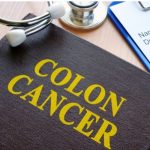IBS Vs Non-IBS Right Abdominal Pain: 9 Causes & Differences.
Our content is not intended nor recommended as a substitute for medical advice by your doctor. Use for informational purposes only.
- Hi, I am Dr. Farahat, an IBS sufferer and gastroenterologist. Many of my IBS patients get confused about IBS pain.
With all the IBS unpredictability and irrationality, Being uncertain about what caused your abdominal pain can be quite stressful; especially if your abdominal pain has atypical patterns and locations.
Here, I will provide an in-depth answer to all your questions about IBS pain on the right side of your abdomen:
- Is right-sided pain common with IBS?
- How does IBS pain on the right side feels like?
- When right-sided pain is NOT an IBS Pain?
- Other causes of left rib pain and how to suspect the cause?
- When to worry and seek medical attention?
Is Right-sided pain typical for IBS? and How common?
IBS pain can be generalized or localized at any part of your abdomen, it is not common for IBS to localize on the right side of your abdomen. According to the journal of Hepatology and gastroenterology, Right-sided abdominal pain occurs in less than 1.5% of IBS patients.
The most common IBS pain locations are around the umbilicus and the upper part of the abdomen in the middle. Here is a breakdown of the frequency of abdominal pain according to the site (ref):
- Around the umbilicus (belly button) {39%}: it is the most common site of IBS pain.
- The upper central part of the abdomen {33%}: the second most common site of IBS pain or discomfort.
- The lower central part of the abdomen: {13%}
- The lower left part of the abdomen: {7%}
- Upper left abdominal pain (under the rib cage): {6%}
- Right-sided IBS pain (upper and lower) are the least common IBS pain locations {1.2%}
Note:
- IBS pain can affect one location in your abdomen. Some have IBS pain or discomfort allover their abdomen.
- Researchers base the above percentages on a few IBS patients in a study in the “journal of gastroenterology and hepatology”.
Although it is not a large scale clinical study, it can give you an idea about the common IBS pain locations.
How does right-sided IBS pain feel like?
Assuming that you are an IBS sufferer, You’re now wondering: Is the right-sided pain an IBS pain or something else?
To answer this question, I will try to explain the character of IBS pain and how it differs from other causes of right-sided abdominal pain.
The characters of IBS Pain (right side):
- Comes in attacks: the fundamental character if irritable bowel syndrome abdominal pain is the “fluctuating nature”
Usually, IBS pain comes in flare-ups and remissions. If the pain felt under the left ribs comes and goes over a long period, it’s probably IBS pain. - Associated with defecation: If the right-sided abdominal pain decrease or increases after you poop, this is a feature of IBS pain.
- Associated with changes in stool frequency: we associate The onset of IBS pain with a change in the frequency of bowel movements (associated with diarrhea or constipation).
- Associated with changes in stool form: we associate The onset of IBS pain with a change in the stool form (associated with loose or hard stools).
- The IBS pain Character: usually, the IBS pain is “Colicy” in nature. Pain arising from the colon is usually in cycles of “Spasms” or “contractions” followed by relaxation.
Also, some IBS patients suffer from just “abdominal discomfort” rather than actual pain.
We commonly associate IBS pain with bloating, diarrhea, or constipation. - Associated with food: when the right pain in the abdomen starts after eating (especially high FODMAP or gas-producing foods), it is more suggestive for it is IBS pain.
- Doesn’t awaken you from sleep: functional abdominal pain (including IBS pain) rarely affects your sleep. If the right-sided stomach pain doesn’t awaken you at night, then it is probably an IBS pain.
- Relieved by IBS medications: another important feature that suggests the right abdominal pain is because of IBS is its relation to IBS medications.
Usually, the IBS pain goes away after you take an antispasmodic or peppermint oil.
When the right side abdominal pain is NOT an IBS pain?
After explaining what is IBS pain, now it is time to explain what is NOT IBS pain.
The features and signs listed below, if present, suggests another cause of left hypochondrial pain than IBS.
Some of these causes are of benign nature, others may require you to consult your doctor.
1- Extreme or very severe pain:
Unlike IBS, pain because of inflammation or trauma to any organ in the right hypochondrial area is usually different from the usual IBS pain.
It can occur in the form of severe stabbing pain that increases with movement or respiration.
Example:
A very common example is the overlap between Gallbladder Pain (cholecystitis) and right-sided IBS pain.
2- Pain that is not going away:
IBS pain comes and goes (flare-ups and remissions). Persistent pain for days or weeks, progressively increasing and not related to defecation and food is not an IBS pain.
Example:
People with Enlarged liver (as with fatty liver disease), can feel persistent pain or discomfort at the right side of their abdomen under the ribs.
3- Pain that is related to Movement:
IBS Right abdominal pain doesn’t change in degree (severity) when you move or change the position of your body.
A pain that increases on walking, standing up, bending the body, coughing, or sleeping on one side of the body is not typical for IBS.
Example:
Right rib fracture or trauma can cause left abdominal pain under the rib cage that increases with movement.
4- Pain that awakens you at night:
It is unusual for IBS pain to awaken you after you fall asleep. Pain on the right side that is of new-onset and great at night is probably not IBS pain.
For example, Right kidney pain (loin Pain) can cause an attack of severe pain at the right side that awakens you at night.
5- Associated fever:
Fever is not a symptom of IBS. presence of fever shows that the left pain under your ribs is not of IBS origin. This is especially important if you relate the onset of left pain to the onset of the fever.
For example, Severe right-sided lower abdominal pain (right iliac pain) with fever may show inflammation of your appendix (appendicitis) rather than IBS pain.
6- Associated vomiting:
Right abdominal pain and vomiting may reflect actual inflammation of infection inside your gut
For example,
- Upper right abdominal pain (right hypochondrial pain) and vomiting may suggest cholecystitis or acute hepatitis (inflammation of your liver).
- Lower right abdominal pain (right iliac pain) and vomiting may suggest appendicitis.
7- Pain that is associated with “Red Flag Signs” of IBS:
- Blood in the stool (learn more about the causes of blood in stool with IBS here)
- The onset of IBS pain after the age of 50.
- Progressive weight loss (a significant weight loss is a loss of over 5% of your body weight over 6 to 12 months without obvious cause (ref)).
- Unexplained fever or anemia.
- Family history of colon cancer (especially if your age is above 40).
You may need to read this in-depth article about the differences between IBS and colon cancer symptoms
But, Please:
Reading an article about your IBS (such as this article) can leave you convinced that there is something worse is happening inside.
So, please remember that the incidence of such serious conditions is rare. It is better to think of the common causes at first (which will be responsible for such pain in over 99% of the time).
Common causes of left pain under the rib OTHER THAN IBS.
1- Appendicitis (lower right abdominal pain).
Lower right abdominal pain is not a usual IBS pain location. if you experience severe abdominal pain, associated with fever, vomiting, and related to the movement of your right leg, consider appendicitis.
How to suspect appendicitis pain:
- Initially (in the first one or two days) the pain is located around the belly button.
- The pain gradually gets worse and moves to the lower right abdomen.
- pain increases with movement or coughing
- severe tenderness at the right lower abdomen on touch or pressure.
- Loss of appetite, severe nausea, or vomiting.
- Fever may occur.
Unlike appendicitis, IBS pain is milder in nature, not associated with severe tenderness, fever, or vomiting.
2- Gall Bladder (Upper right abdominal pain).
The gall bladder can inflame with stone formation (cholelithiasis) or without stone formation.
Biliary colic is an “inflammatory pain” that is sharper and more severe than the right-sided IBS pain.
Signs suggesting the pain is of Biliary (gallbladder) origin:
- More intense, the average biliary colic attack lasts longer and is more severe.
- Associated with severe nausea (especially after fatty meals) or even vomiting.
- Severe tenderness below the right rib cage.
- The pain can refer to the right side of the chest, back, and right shoulder.
- Fever can occur with biliary colic.
MORE: 5 Mimics of Gallbladder Pain (Biliary Colic): Gastroenterologist Explains.
3- Liver (Upper right abdominal pain or discomfort)
the liver can contribute to a lesser extent to the right-sided upper abdominal pain (upper right abdominal discomfort is more common than pain).
common conditions causing liver pain:
- Acute hepatitis (inflammation caused by infections like hepatitis A, alcoholic hepatitis, or any other causes.
- Liver enlargement: usually causes heaviness or discomfort rather than true pain, common causes include Fatty liver disease (alcoholic or non-alcoholic).
- Liver Abscess.
- liver congestion as with people with right-sided heart failure or chronic lung diseases.
- Liver tumors (primary hepatic cancer “hepatocellular carcinoma” or metastasis from other malignant diseases).
How to suspect liver pain:
- Liver pain at the right side of your abdomen can take several forms.
- Most people feel it as a dull, throbbing sensation (unlike IBS which is colicy in nature).
- It can also feel like a stabbing sensation that takes your breath away.
- commonly associated with other signs of liver diseases such as jaundice, dark brownish urine.
- Anorexia (loss of appetite) and fatigue are common with liver diseases.
- Itchy skin.
- Maybe swelling of legs or ankles in the late stages of liver diseases.
consult your doctor if you suspect any signs of liver disease.
4- Stomach & lower esophagus.
Pain from the stomach is:
- Upper abdominal pain at the center (Typical location)
- It can be right or left abdominal pain under the ribs.
- The Pain can radiate into the back.
The character of pain is usually sharp, stabbing, or burning pain. it is usually associated with nausea, GERD, or bloating.
Common gastric conditions that can cause stomach pain under left ribs:
- Gastritis: acute and chronic.
- Gastric ulcer.
- GERD.
- Functional dyspepsia
Always consider Functional dyspepsia if you continuously experience post-prandial fullness and pain under the ribs with your IBS.
Functional dyspepsia is of special importance as many IBS patients have associated functional dyspepsia. Actually, this meta-analysis estimates that about 37% of IBS patients suffer from functional dyspepsia.
Functional dyspepsia (also known as indigestion) is a group of symptoms including stomach pain, bloating, nausea, and maybe a loss of appetite.
Unfortunately, no specific test or imaging can diagnose such functional diseases. Only your doctor can diagnose you with such conditions after the exclusion of any organic diseases.
We base the diagnosis of functional gut diseases only on certain clinical criteria. The “Rome Foundation” for gastrointestinal diseases is the primary reference for functional GI diseases.
Due to its common association with IBS, consider functional dyspepsia (indigestion) as a cause of right abdominal pain with IBS.
MORE: 5 Causes of Stomach & Shoulder pain (Right Side).
5- Other colonic conditions (Upper or lower right abdominal pain)
IBS is not the only condition that may affect your colon. Other diseases or conditions that affect your colon (especially the right colon) can cause pain on the right side that is similar to IBS pain.
Examples:
- IBD (inflammatory Bowel Disease) as Crohn’s and Ulcerative Colitis.
- Trapped wind in the left colonic flexure.
- Any localized inflammation (colitis), or mass (colon cancer).
Learn more about the differences between right IBS pain and right colon cancer pain here.
Usually, the differentiation between IBS and various causes of colonic pain is not easy. But with IBD, the condition is more severe and may be associated with Blood in stool, fever, or weight loss.
6- Your abdominal wall & Chest (lower ribs, intercostal muscle, left pleura, and left lung).
This is another very common cause of pain that may affect your right side with IBS. the conditions can be simply of muscular or skeletal origin.
Any bone trauma, bone disease (especially osteoporosis in females) can lead to vague right abdominal pain at the ribs or just under the rib cage.
Another contributing cause is a persistent or chronic cough. If you have a persistent cough for many days or even years, then subcostal pain can be attributed to cough.
The distinctive features of pain from the musculoskeletal origin are:
- Related to movement: if the pain increases greatly when you move or change your body position, it may suggest a musculoskeletal origin.
- History of rib or right side trauma, false movements, or lifting heavyweight.
- History of osteoporosis, or any bone disease.
Another cause of lower right abdominal pain with IBS is defects in your abdominal wall called a hernia.
With Hernia, a part of your intestine and its surrounding fat may protrude through muscle defects causing stretching or stabbing pain usually in the inner side of your right thig (groin area)
A swelling caused by the herniation of the intestine can also be noted. It may reach down to the testicles.
7- The right kidney.
another cause is painful conditions of the right kidney, but the right kidney lies in the back behind your colon and liver.
Som typical kidney pain location is in your sides or middle to upper right back. Common conditions that cause kidney pain are
- kidney stones.
- Kidney gravels (tiny stones).
- Kidney inflammation (urinary tract infection or glomerulonephritis).
When you suspect kidney pain:
- The pain is usually more intense colic between your ribs and hip on sides.
- It radiates to the back and right groin.
- May be associated with severe nausea or even vomiting.
- The attack typically lasts for 20 to 60 minutes.
- You are usually free from pain in between attacks.
- May be associated with painful urination, cloudy or bloody urine.
- Fever may be present in kidney infections.
MORE:
- mid-back right-sided pain.
- right side pain under ribs towards the back.
- 4 Causes of Pain in Liver Area That Comes and Goes.
8- Females only (the right ovary, right fallopian tube, and the uterus).
pain originating from the female reproductive system can cause lower abdominal pain.
Examples of conditions that can cause pain:
- Right ovaries: ovarian cyst, torsion, ovarian inflammation (oophoritis) ovarian cancer, and during ovulation.
- Right fallopian tubes: Pelvic inflammatory disease, Right ectopic pregnancy, inflammation of the tube (salpingitis).
- Uterus: Menstrual cramps, which usually happen just before and during your menstrual cycles.
Also, other conditions such as new pregnancy, endometriosis, uterine cancer can cause right lower abdominal pain.
Note: most of the above conditions are rare, the most common causes include:
- Menstrual cramps.
- Ovulation pain.
- Benign ovarian cysts.
9- Unexplained, Fibromyalgia, and more!
Often, doctors cannot identify a specific cause of abnormal pain locations with IBS.
IBS can cause pain in “atypical” locations or presentations such as (ref):
- Back pain.
- Leg pain.
- Pelvic pain.
- Painful urination (intestinal cystitis).
- Unexplained generalized muscle pains
- Fibromyalgia.
- Generalized fatigue and headaches.
- Chest pains and shortness of breath.

One of the common examples of non-typical IBS symptoms is its association with fibromyalgia.
Fibromyalgia is widespread pain in the muscles, ligaments, and tendons in your body. And the pain under your left rib cage may be one of its symptoms.
Some studies estimate that Fibromyalgia Syndrome (FM) is present in up to 60% of patients with Irritable bowel syndrome (ref).
if you experience pain in “atypical” IBS locations, consider discussing fibromyalgia with your doctor.
Read My in-depth guide about “IBS pain relief
- Evidence-based
- Written by a doctor.






